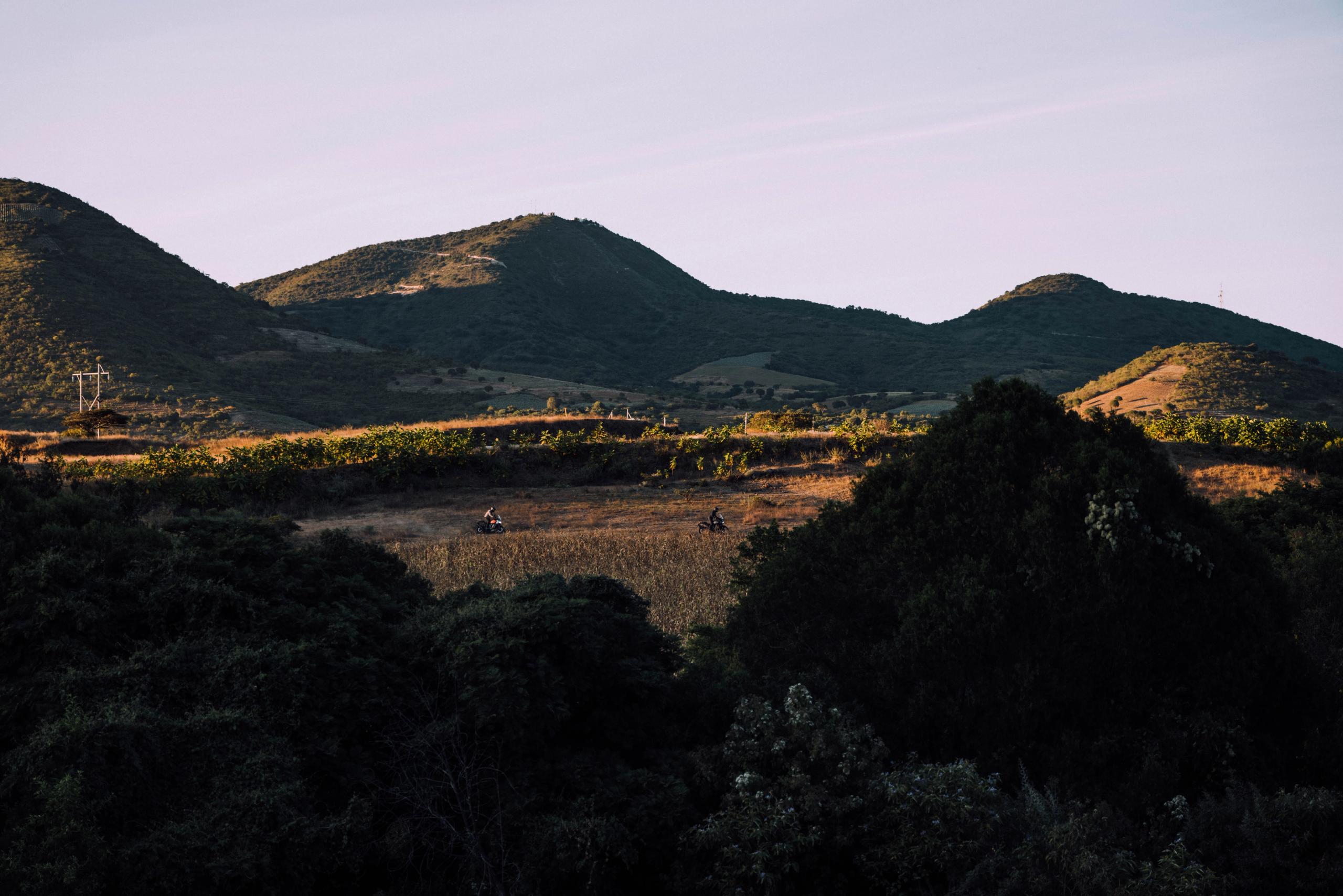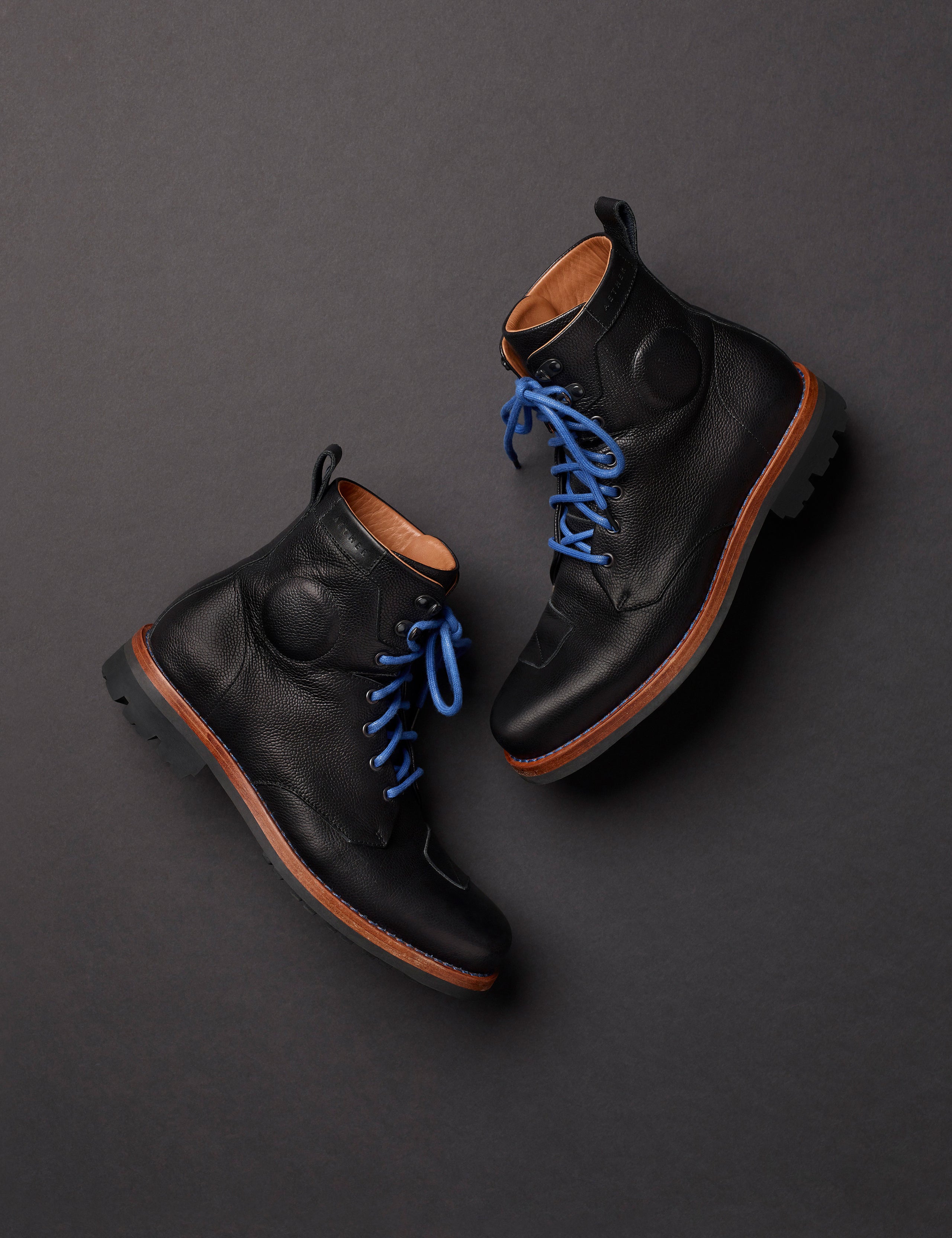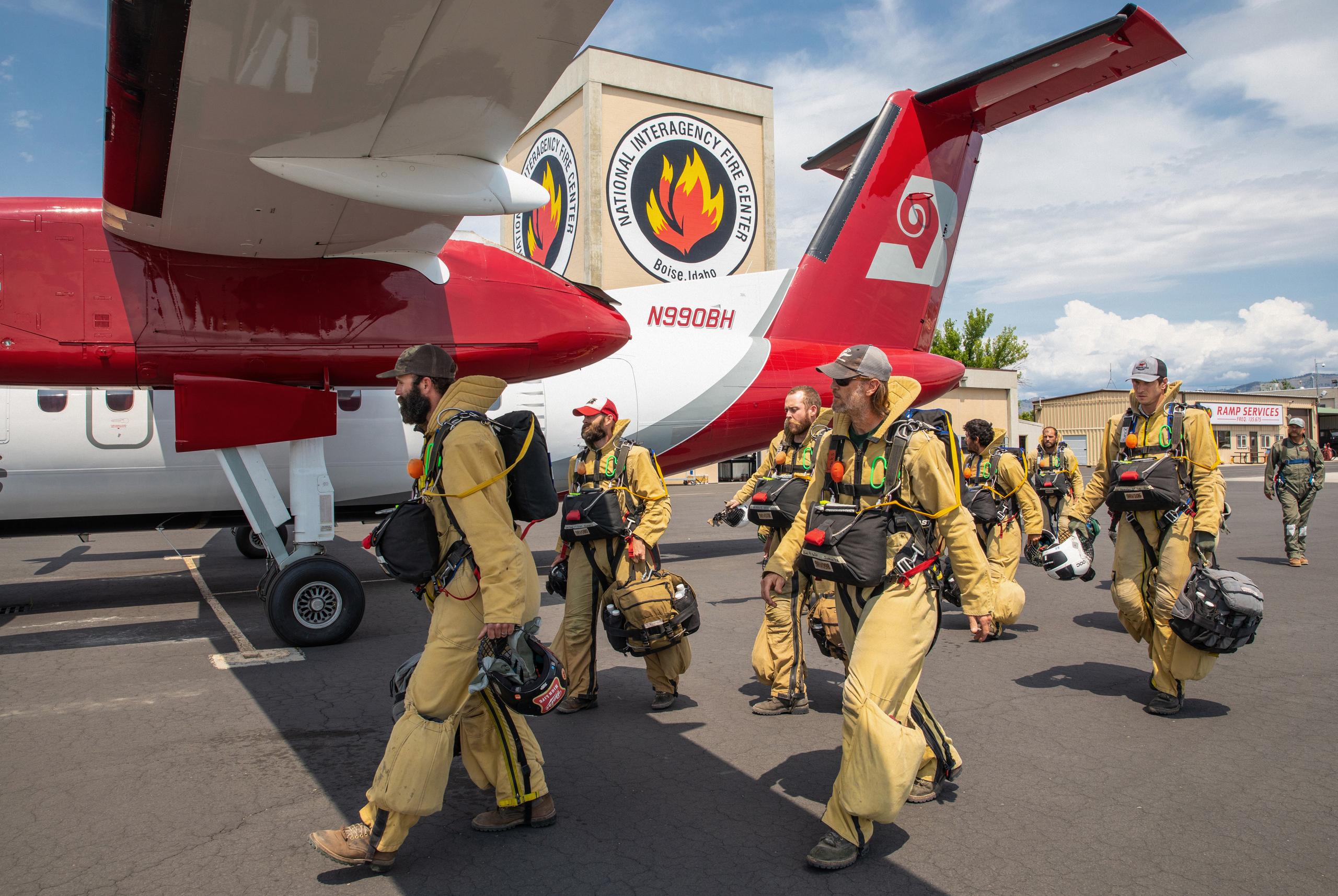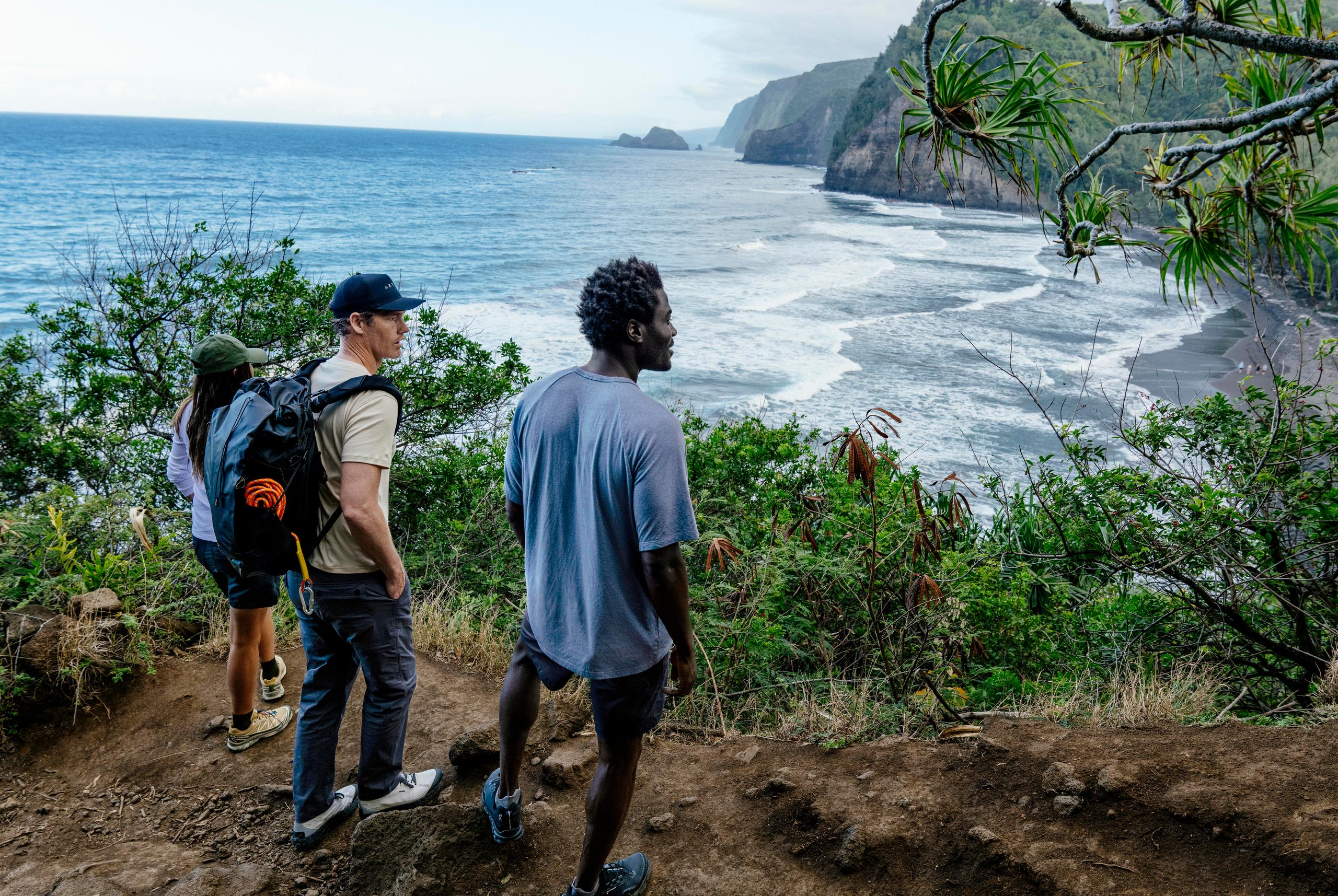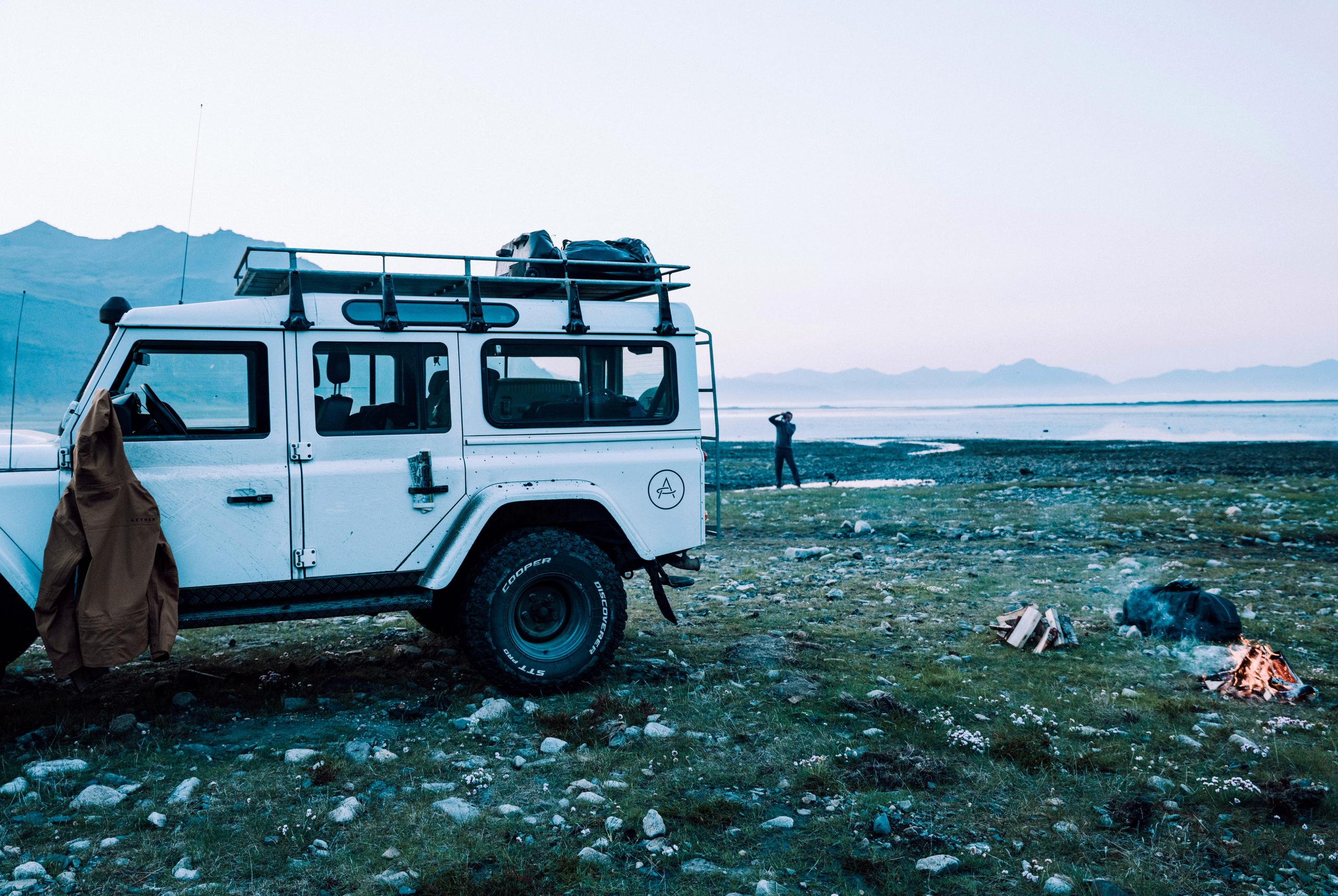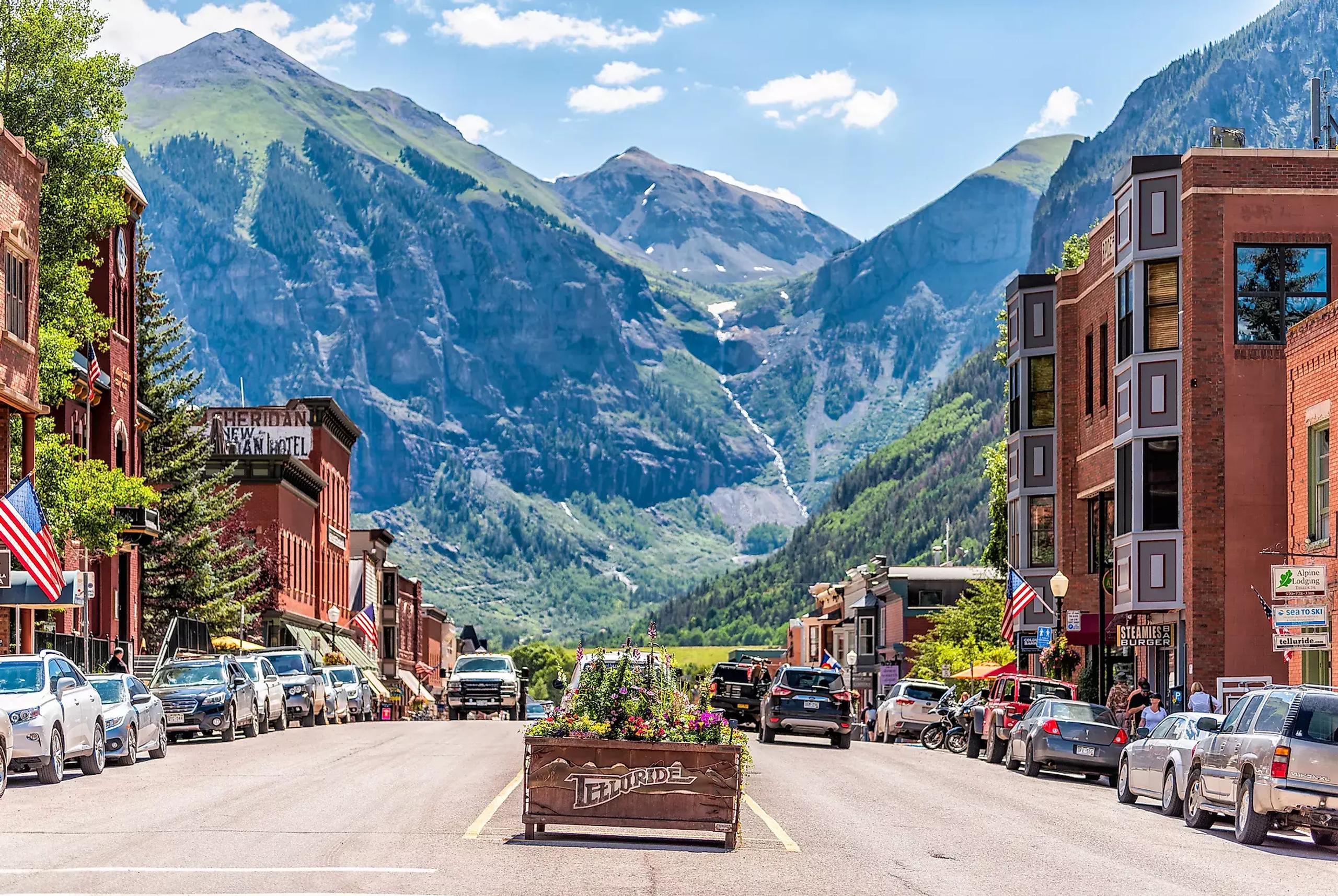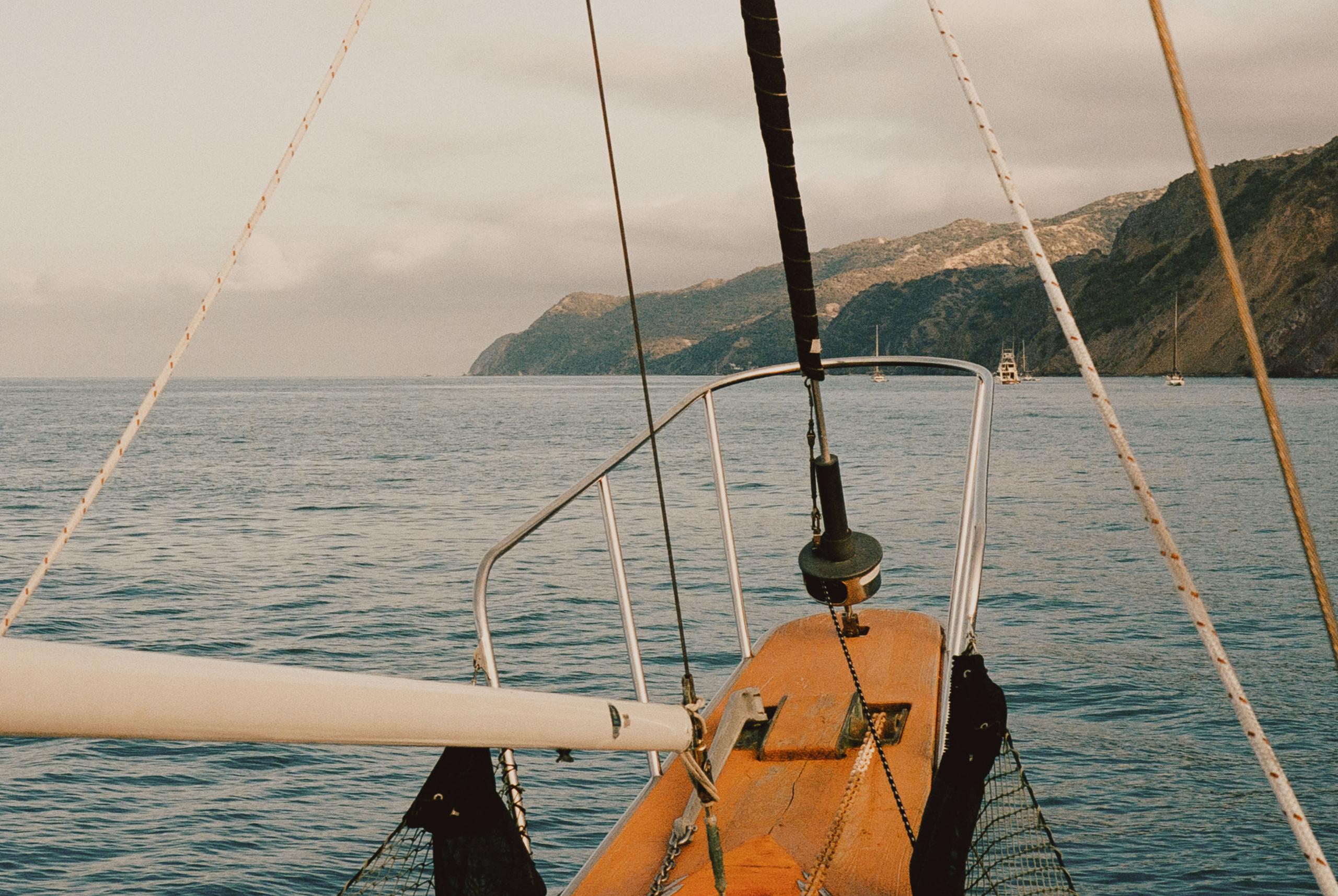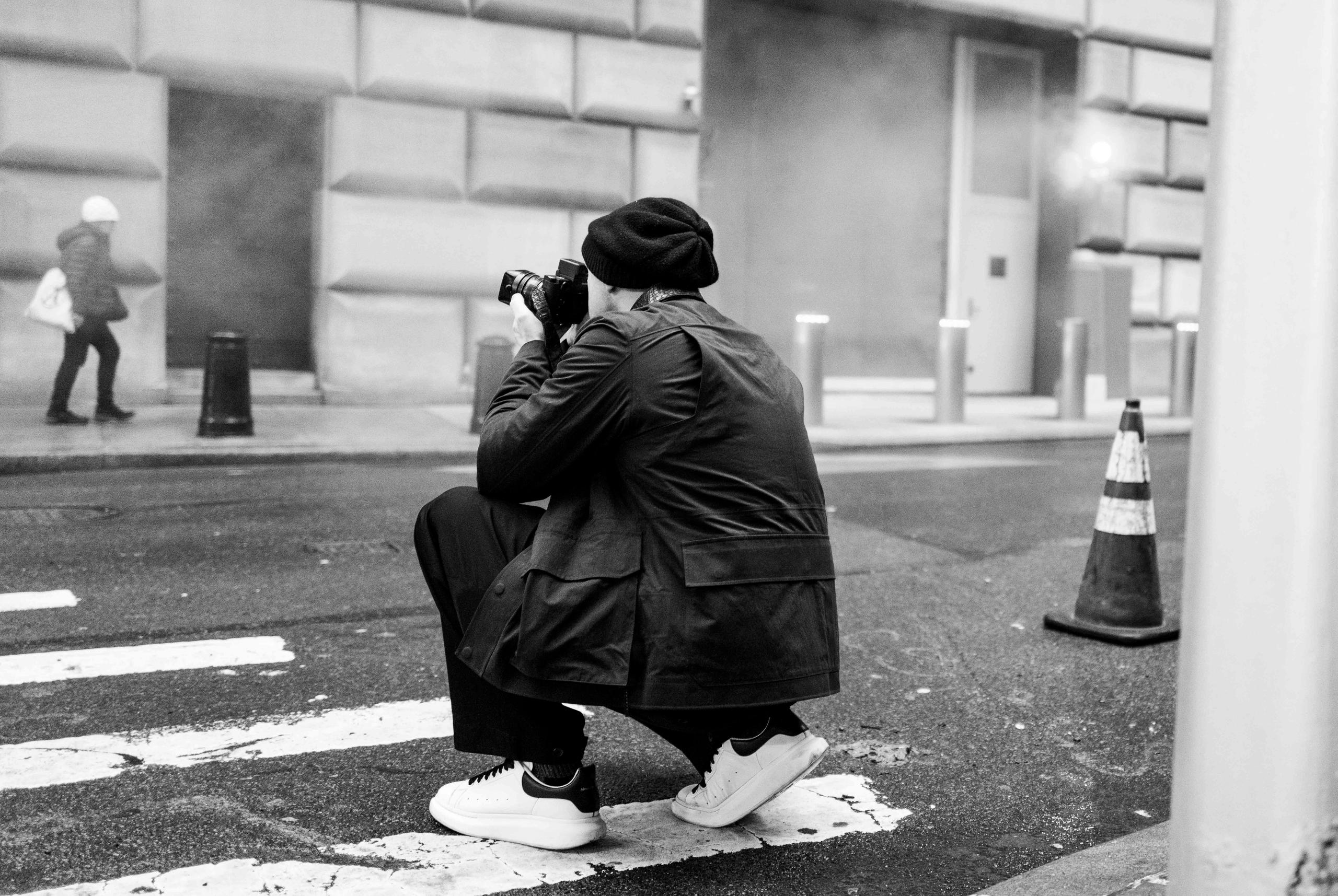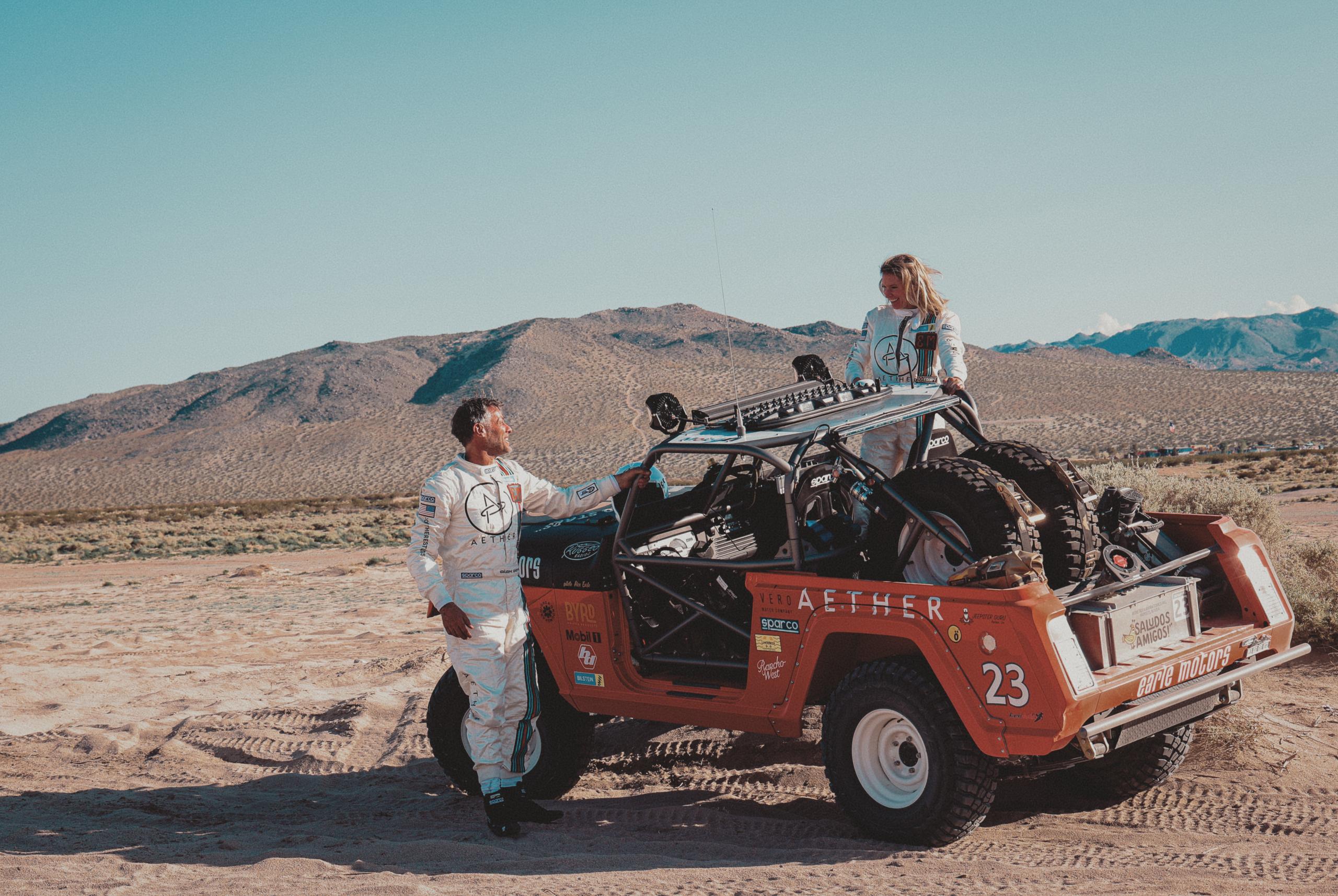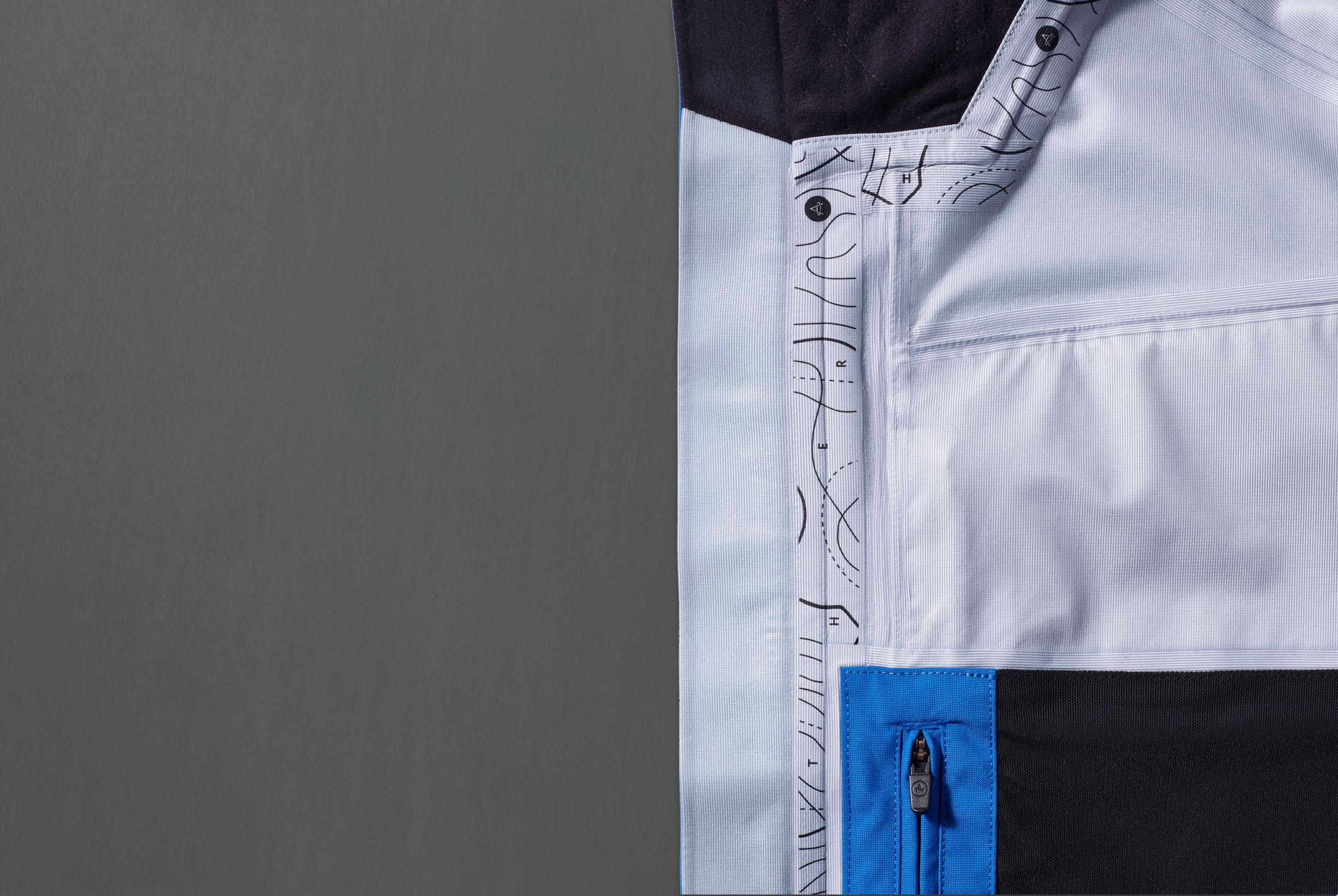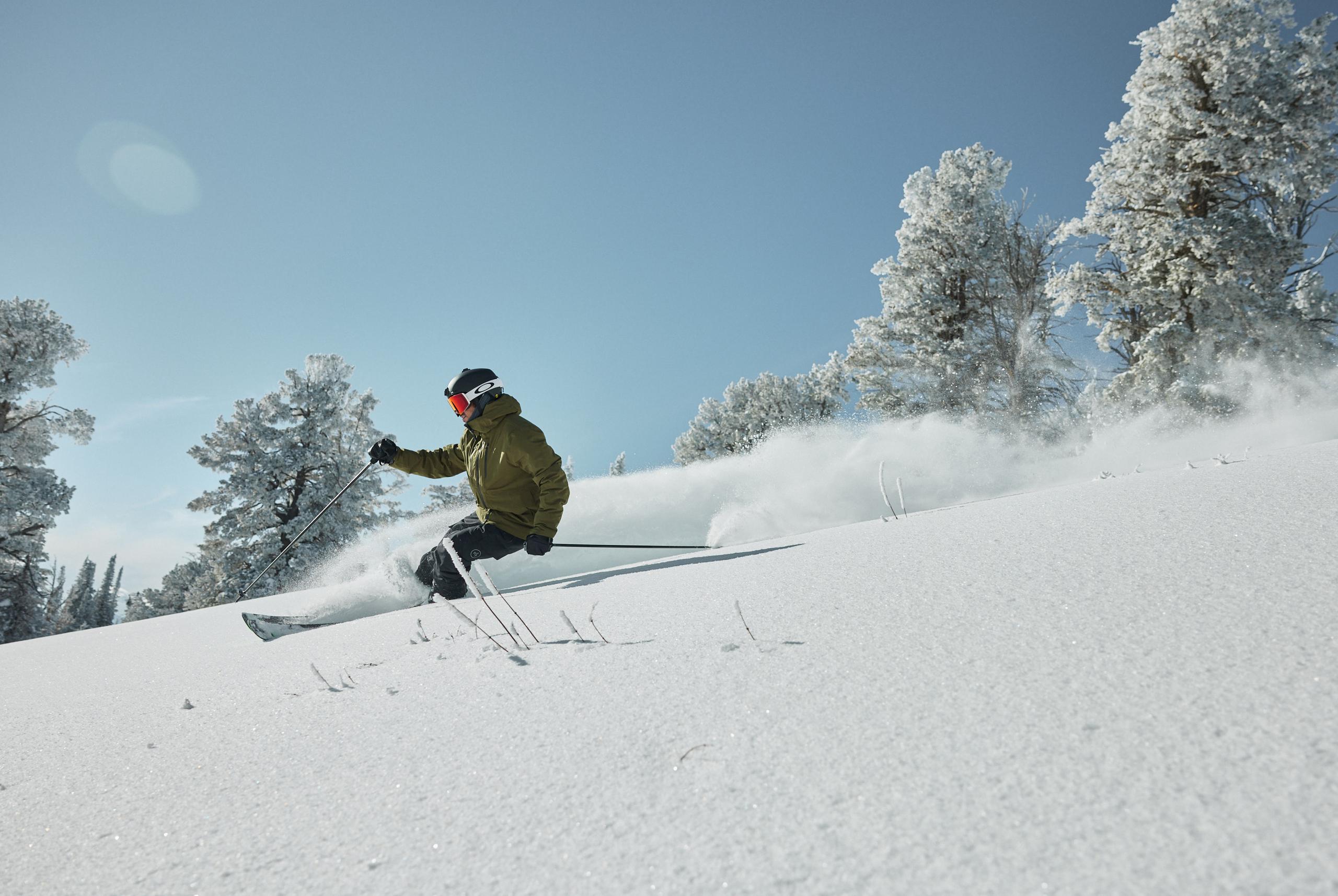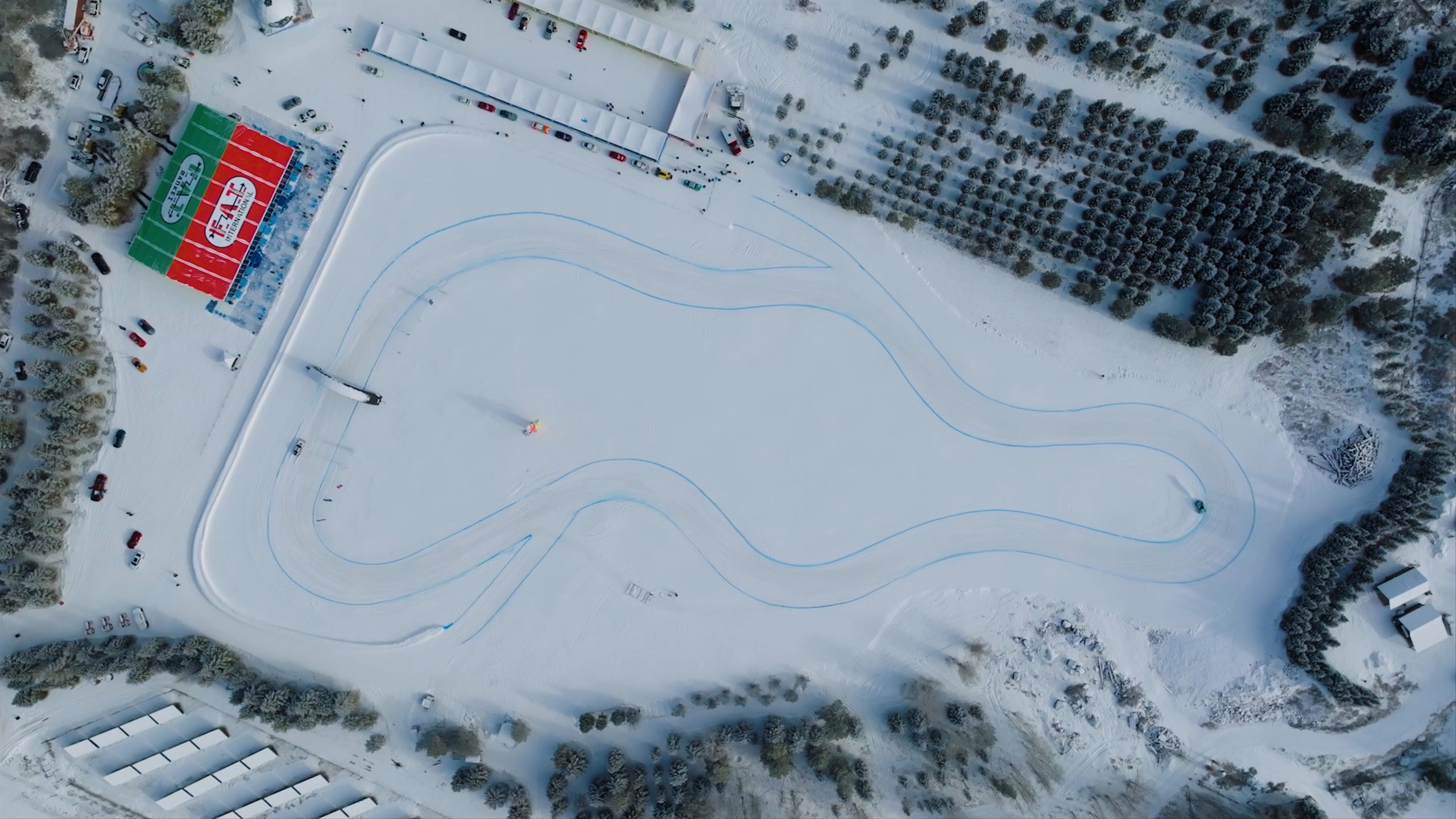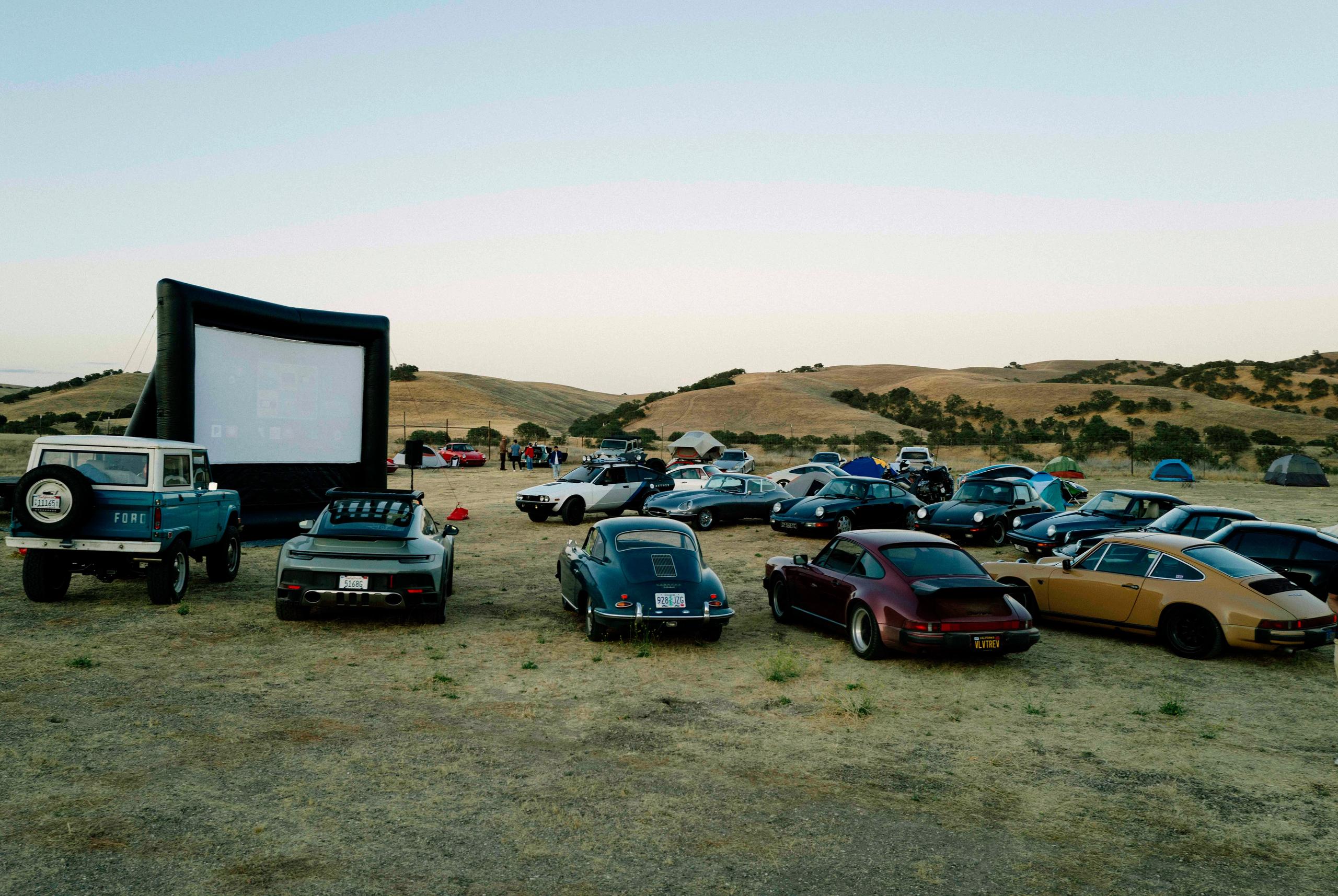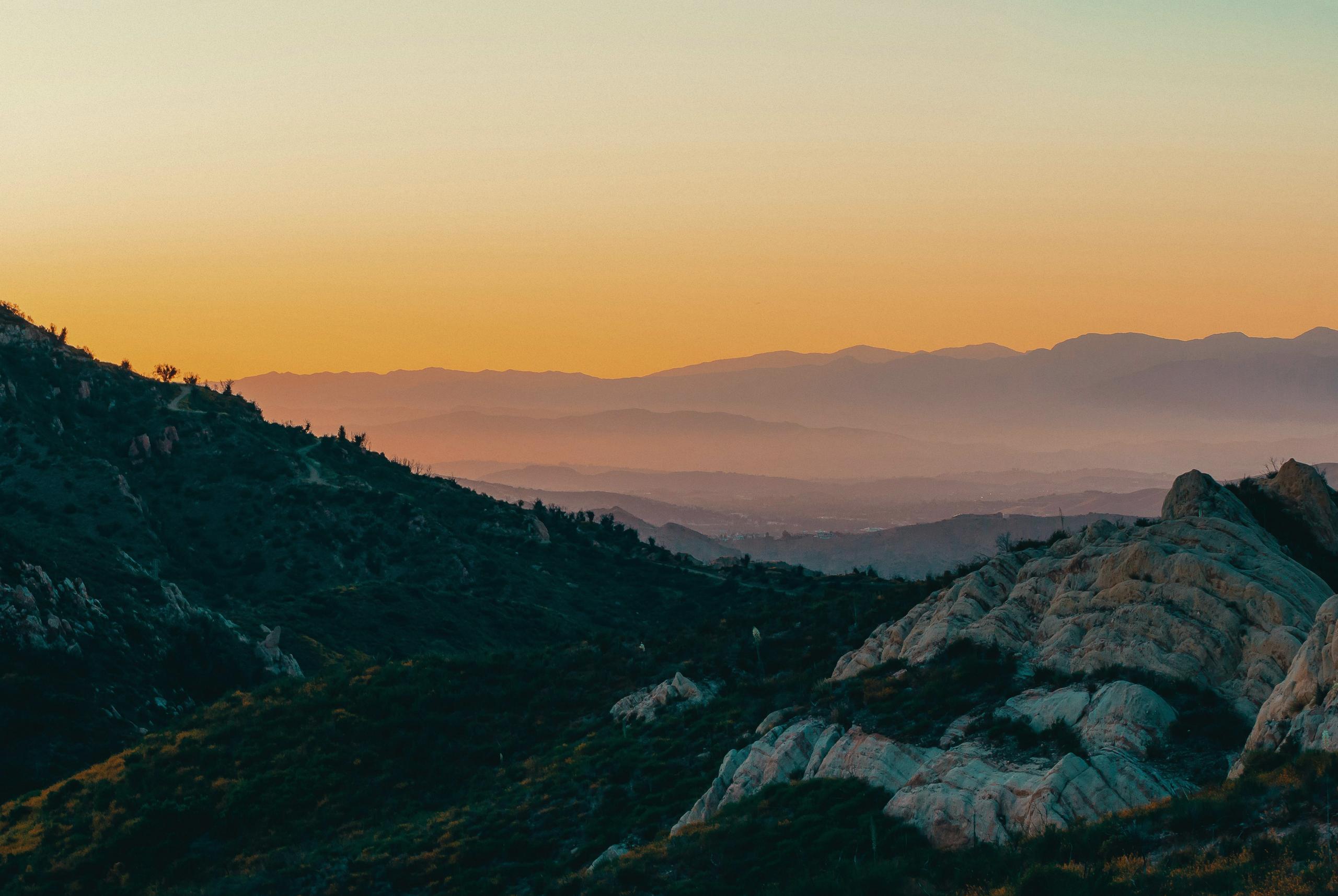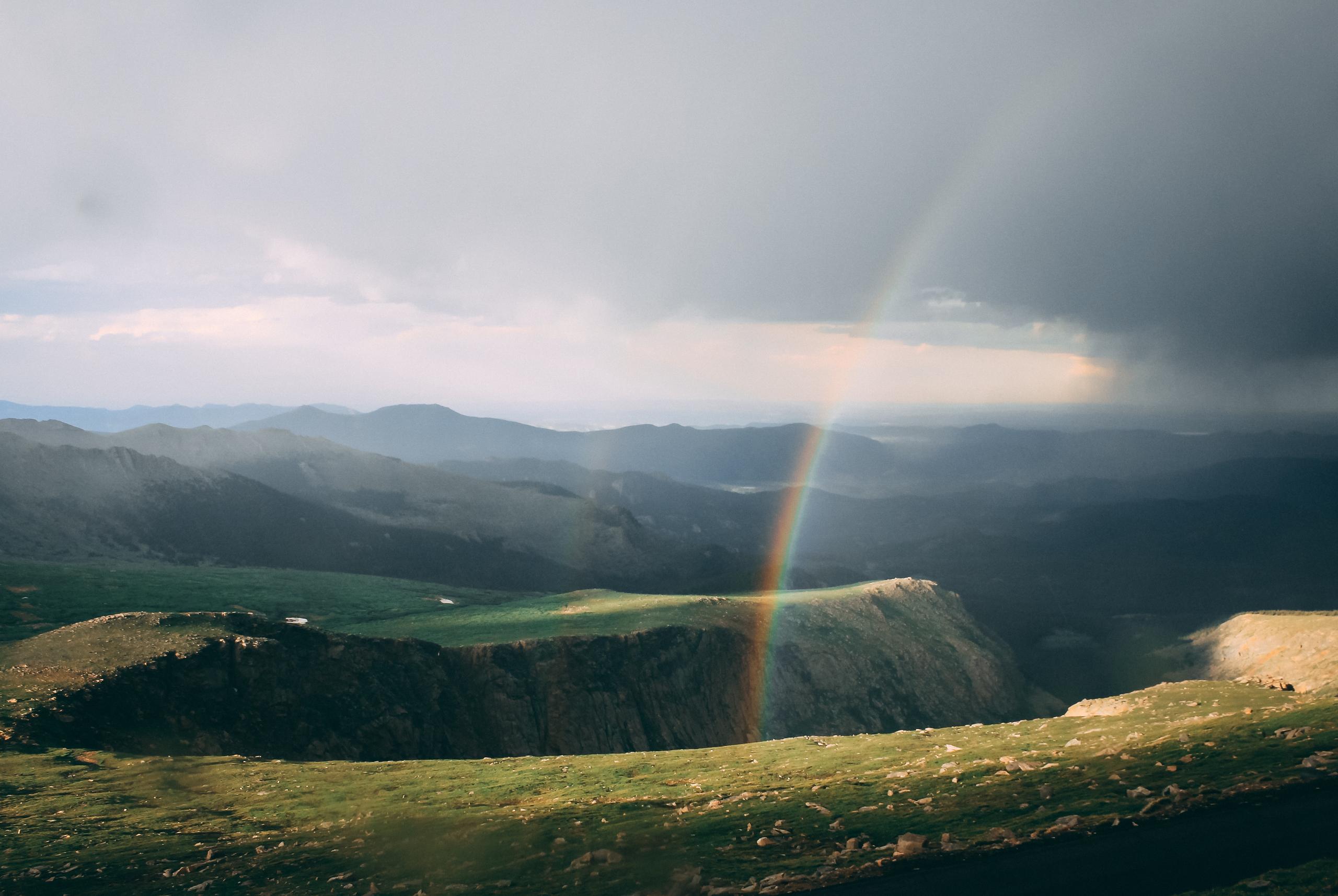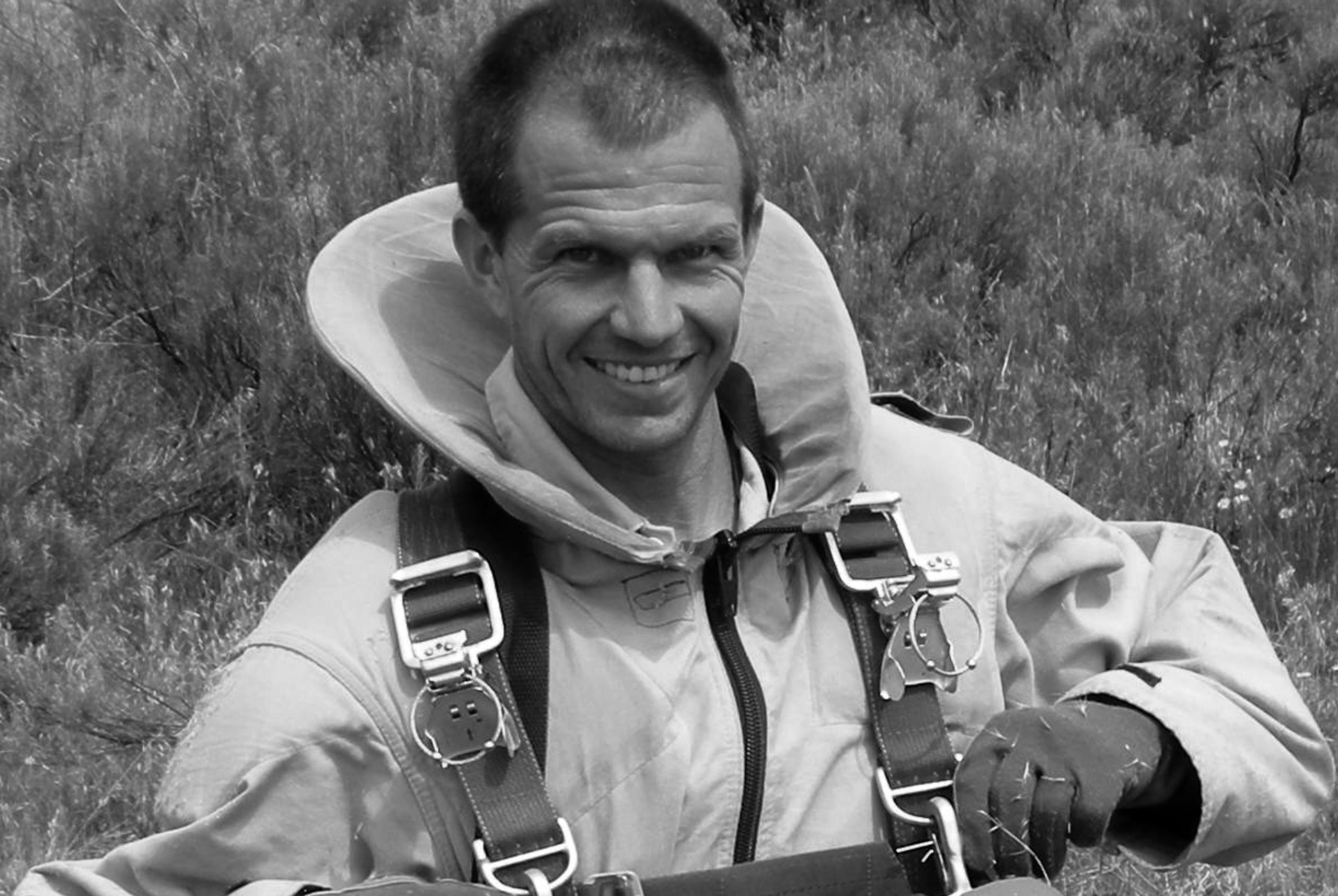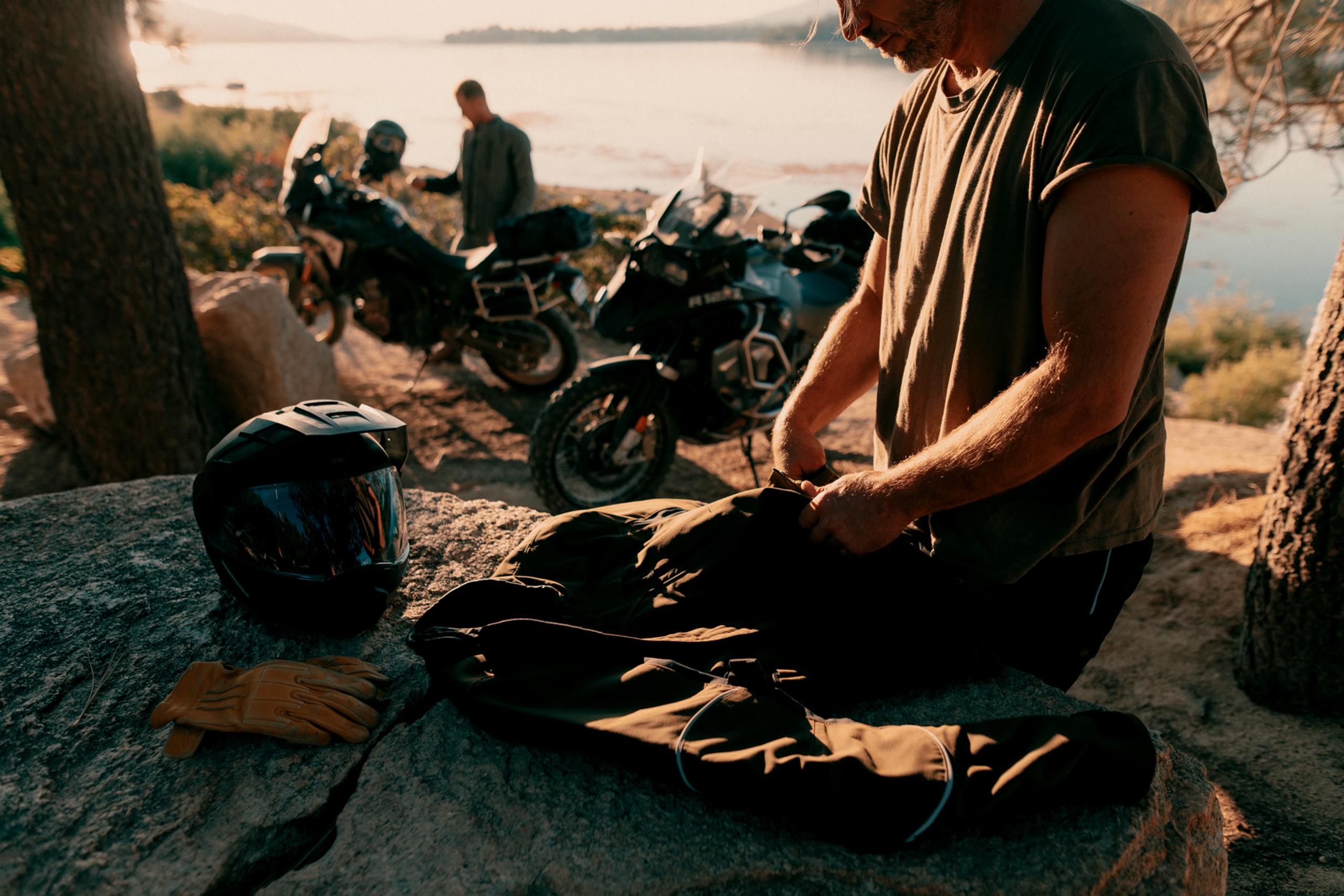
How To Pack For Motorcycle Touring
Motorcycle touring affords a unique sense of freedom and adventure that other forms of travel simply can’t compare to. From providing a better view of nature and your surroundings to being more cost effective, exploring the world on two wheels offers a myriad of distinct advantages over traveling by car. One obvious downside to traveling on a bike, however, is limited storage space. If you know what to pack and how to properly organize, pack, and mount everything, motorcycles are perfectly capable of accommodating all the kit you need for life on the road, whether you’re doing a local overnight trip or embarking on an international world tour. So, with this in mind, we’re taking a deep dive into the logistics and planning needed for long-distance traveling on a bike, breaking down what to bring and how to bring it in this guide to how to pack for motorcycle touring.
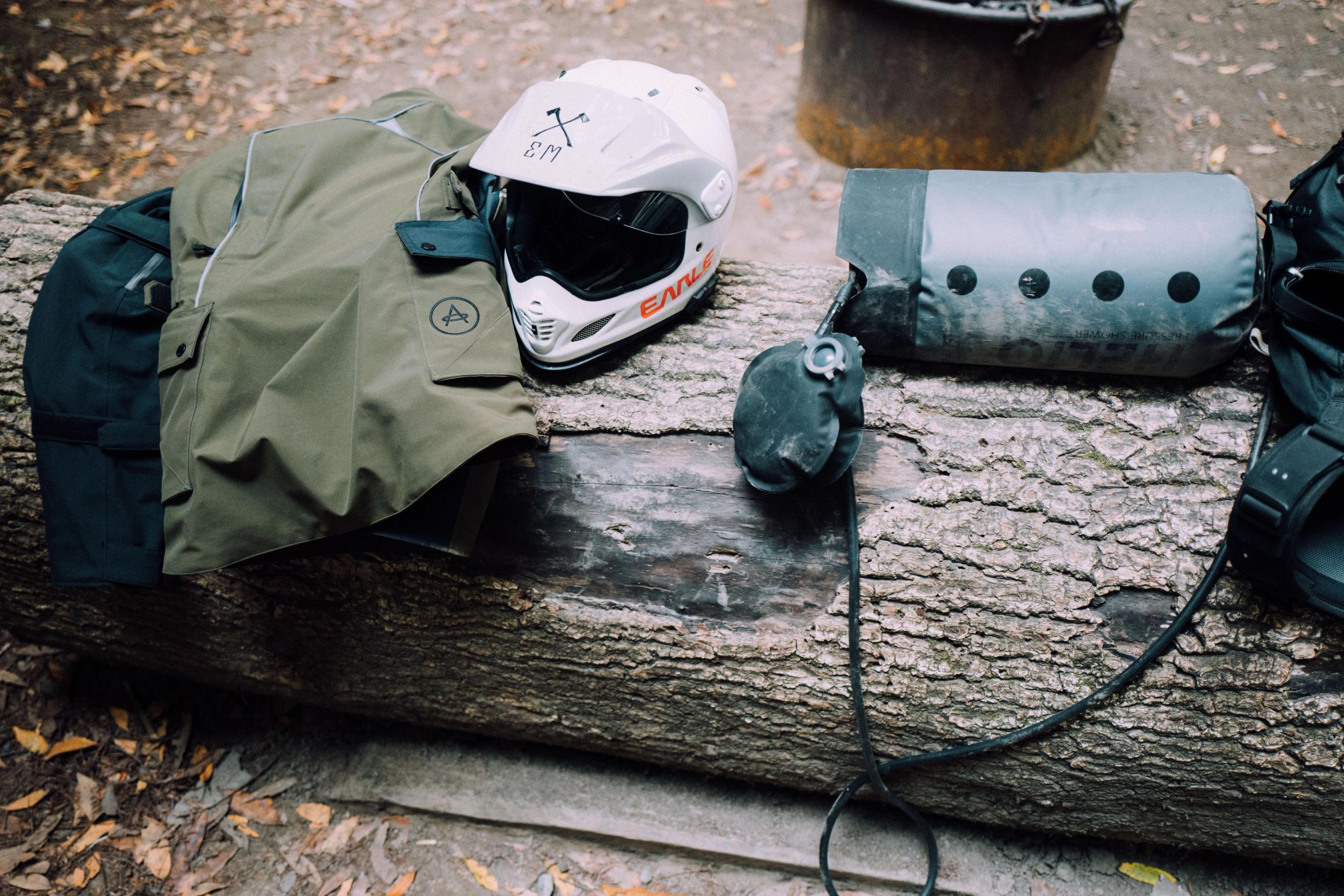
The Planning Phase
Successfully packing for motorcycle travel primarily comes down to solid planning and preparation. While there are dozens of factors that can be taken into account when getting ready, the two main areas you should focus on are when and where you’re going, and what services you plan to utilize along the way.
Consider When & Where You’re Traveling
The region or regions that you plan on riding through and the time of year you plan on doing it should ultimately serve as your jumping off point for the rest of your planning. The locale, season, and weather will dictate the type of clothing and riding gear you’ll likely need — whether it’s robust, insulated cold-weather gear or perforated summer-ready kit.
Pro Tip: A great way to minimize the amount of kit that you pack is to opt for pieces of riding gear that can comfortably be worn both on and off the bike, such as the AETHER Moto Boot.
Consider What Services You’ll Use
The type of services you plan on using while touring will play a massive role in what you’ll need to pack. For example, if you plan on moto camping, you’ll need a tent, sleeping pad, and sleeping bag. However, if you intend on staying at motels, Airbnbs, or crashing with friends or family along the way, you can forgo the camping gear. Likewise, if you plan on preparing your own food while traveling, you’ll require a small camp stove, a mess kit, some basic food prep gear, possibly a small cooler, and the actual food itself. If you’ll be getting your meals on the road from restaurants, diners, and truck stops, you can most likely ditch the food and food prep gear, and simply pack a few snacks.
Pro Tip: If you use laundromats or laundry services every few days while touring, you can pack lighter and carry fewer changes of clothes without having to re-wear dirty garments.
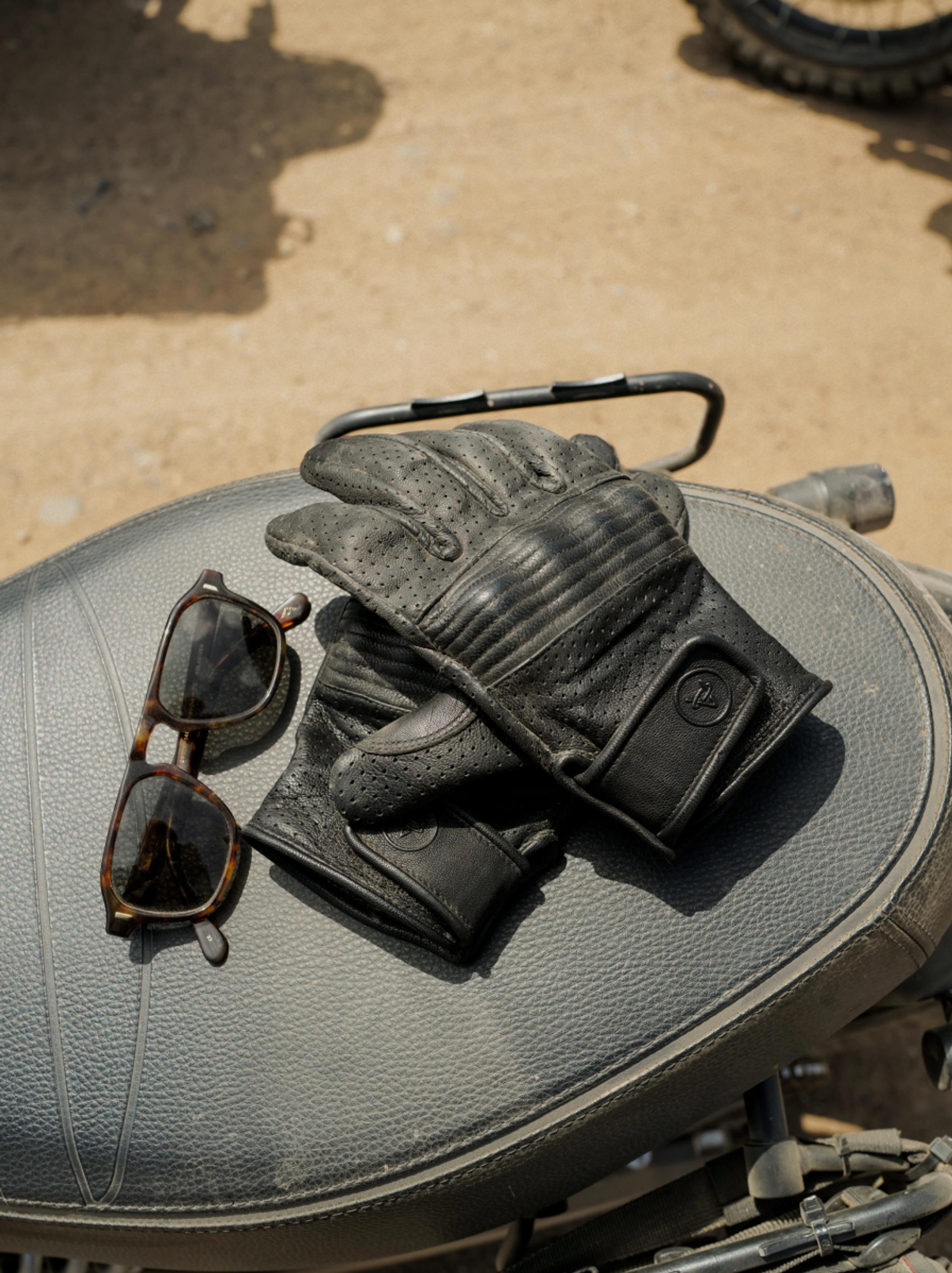
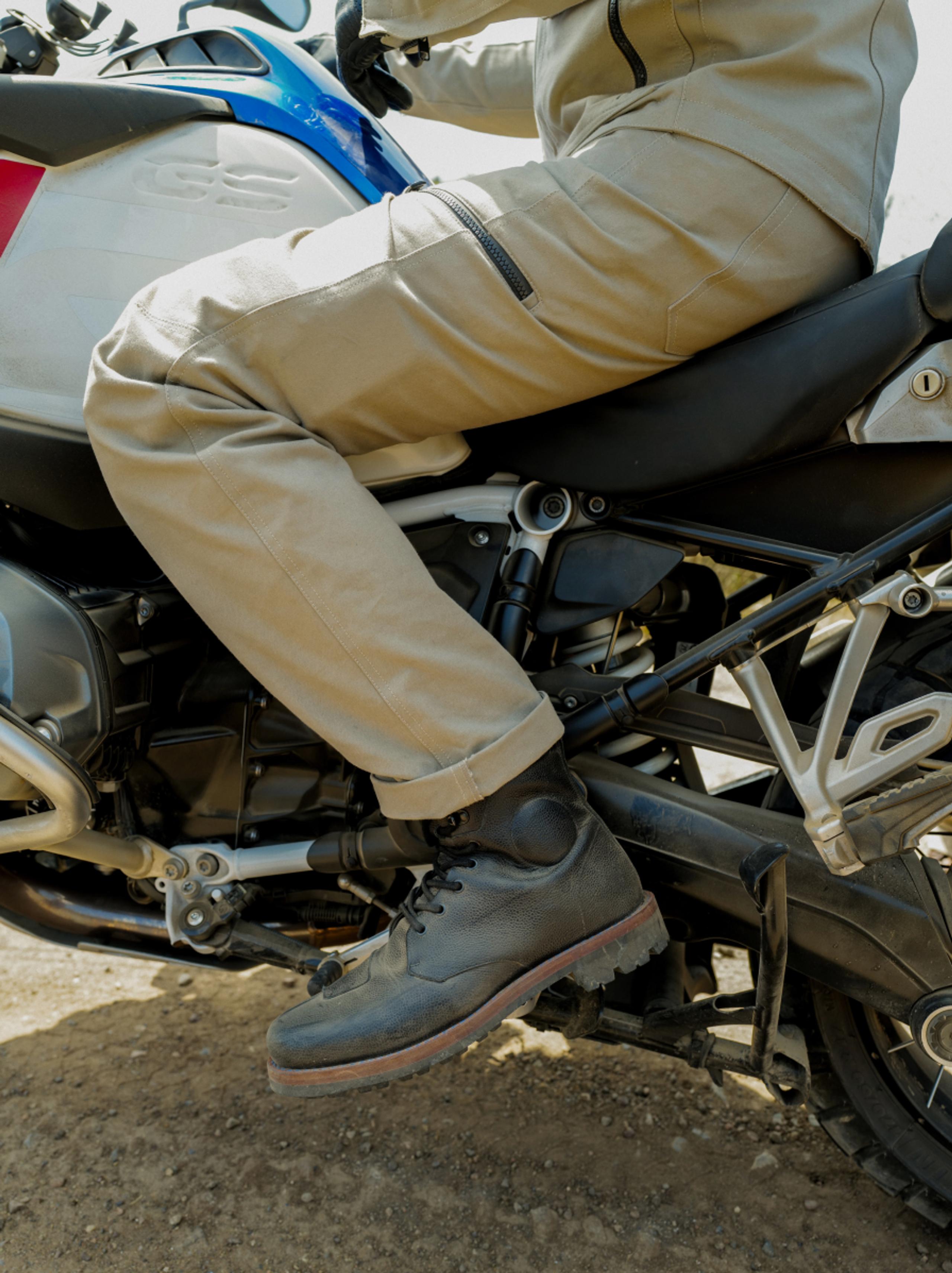
Always Expect The Unexpected
Just like regular riding or commuting, when touring on a motorcycle, you should always expect the best but prepare for the worst. So, even if your trip’s forecast doesn’t anticipate any rain, you’ll still want to pack a rain slicker, waterproof pants, and boot covers that you can toss on over your other riding gear if the skies do open up. Alternatively, you can also opt for a more versatile waterproof riding jacket — such as AETHER’s Divide Motorcycle Jacket or Mulholland Motorcycle Jacket. For this same reason, we also highly recommend utilizing waterproof bags and storage for all your gear like our 45-liter or 60-liter Excursion Duffle Bags. In order to be ready for whatever the open road throws at you, you’ll also want to pack a basic first aid kit.
Pro Tip: Always familiarize yourself with any gear or kit you plan on bringing with you, as the last place you want to learn how to use something like a first aid kit or tire patch kit is on the side of the road — possibly at night…possibly in the rain.
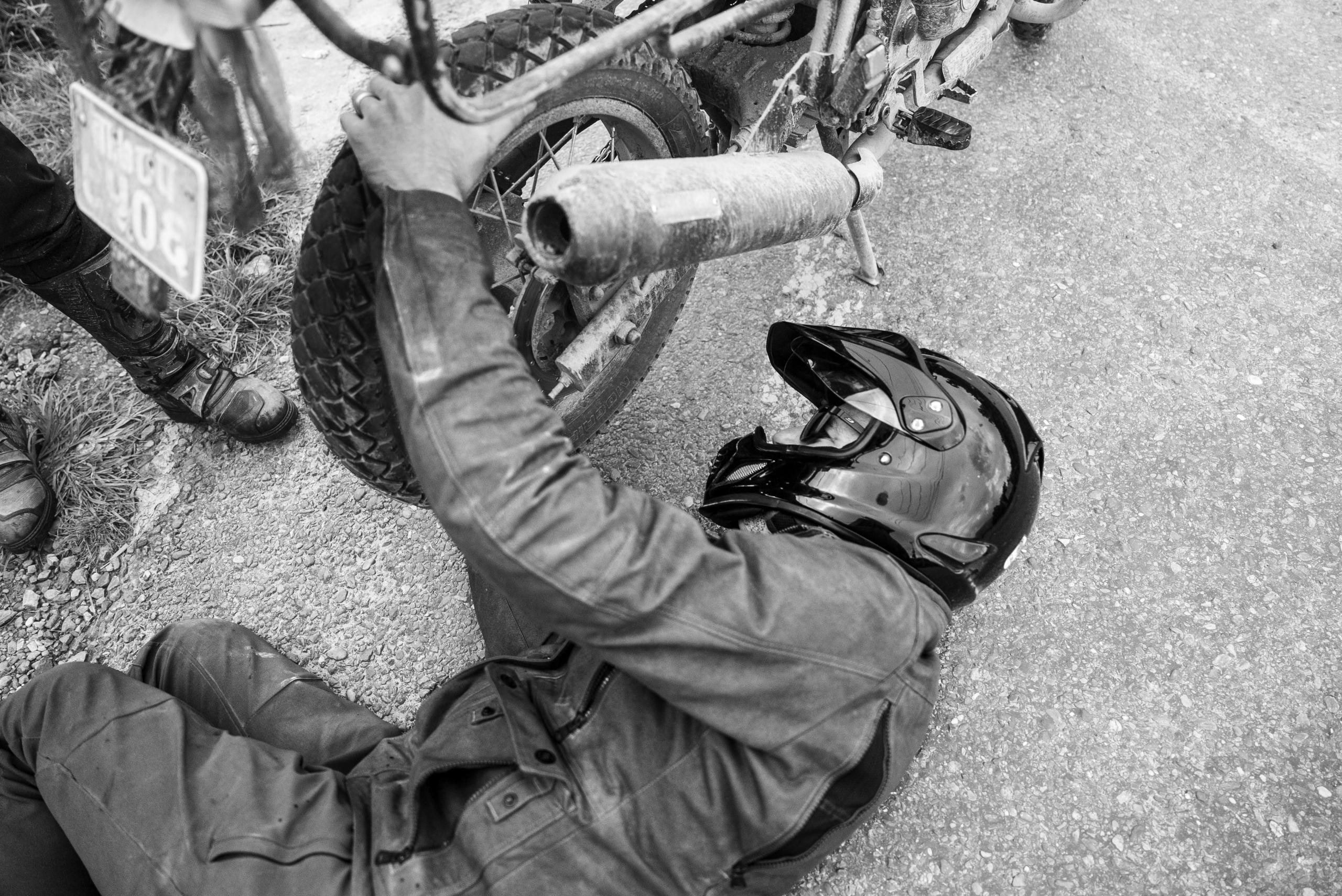
Be Ready For Roadside Fixes
Piggybacking on the section above, we also urge motorcycle travelers to carry an assortment of gear needed to perform basic roadside repairs. Alongside some electrical tape, paracord, and zip-ties for MacGyvering temporary fixes, you’ll also likely want to arm yourself with tire patch and plug kits, a C02 canister or mini air compressor, and a power bank capable of jumpstarting a dead battery. If you’re familiar with your motorcycle and possess some basic wrenching abilities, we’d also highly recommend packing some basic hand tools such as a socket set, Allen keys, and a few bit drivers. At the very least you should be carrying a Leatherman-style multi-tool. What’s more, we always recommend carrying a RotopaX cell or fuel canister in the event you run out of gas. It also never hurts to pack a few basic extras such as fuses and spark plugs.
Pro Tip: Always be sure to review and test your gear prior to packing it. If something has broken or failed, you’ll have the ability to repair or replace it prior to departing on your trip — rather than learning about the damage while on the road or in the field.
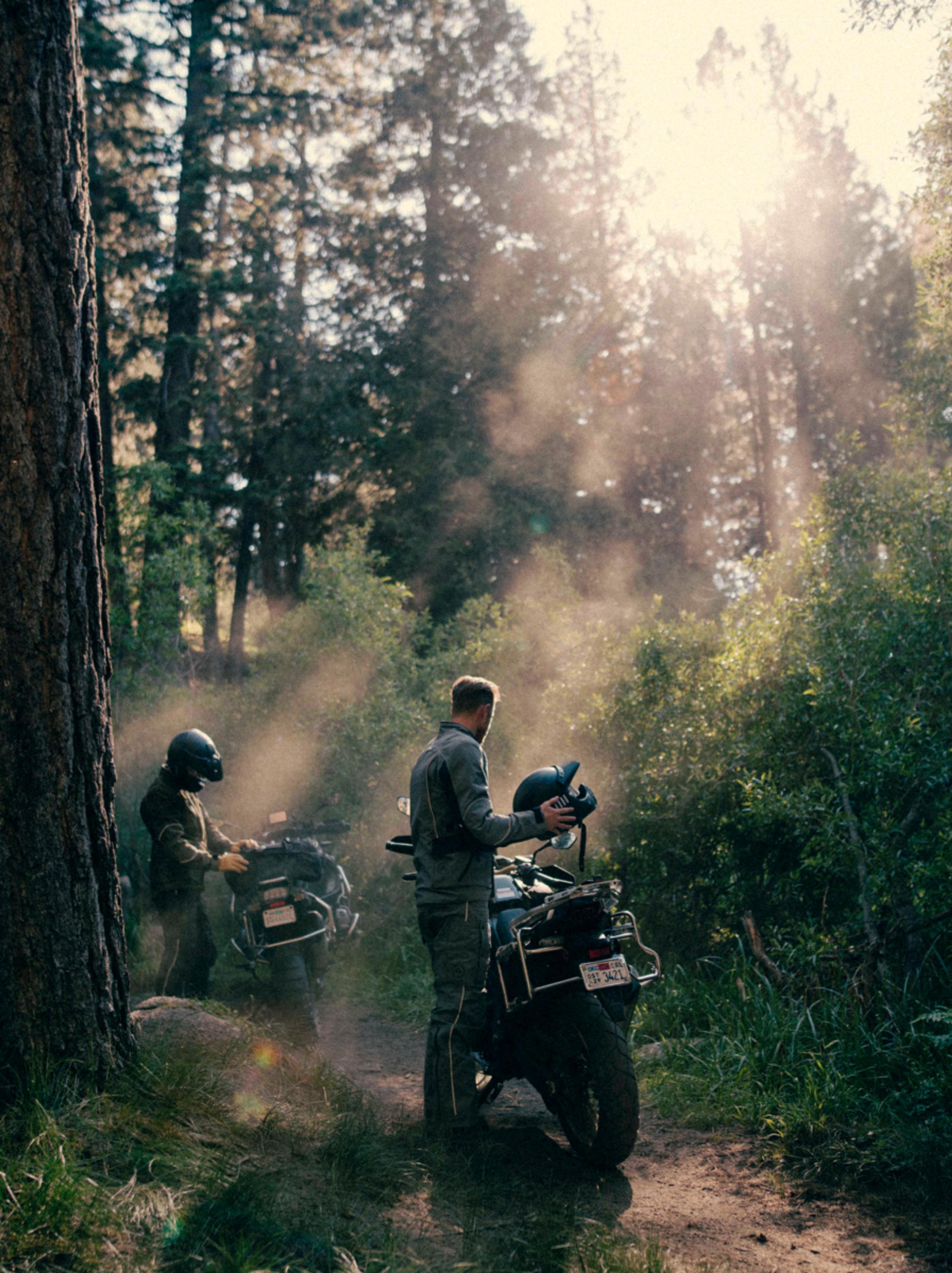
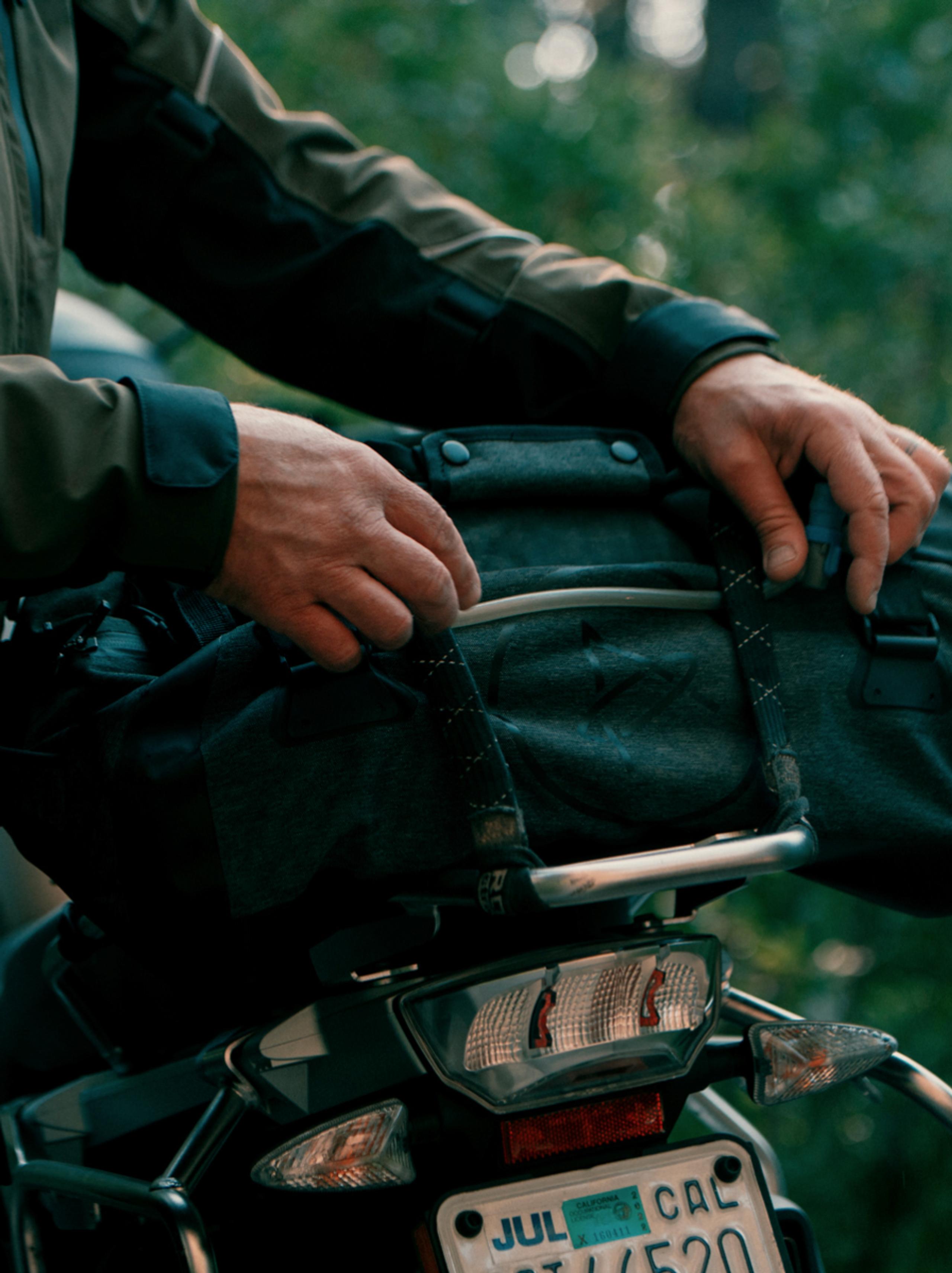
Where On The Bike To Pack
What you pack is obviously of extreme importance, but so too is how you actually pack it. The first thing to consider here is the type of luggage, bags, and other storage solutions you plan on using, as this will largely dictate the amount of overall storage space that you have to work with. Whether you opt for duffels and dry bags, or hard panniers and a top case, you’ll want to keep the weight of your gear distributed as evenly as possible when loading up. Whenever you can, you’ll also want to mount or lash any additional bags or gear onto the bike as close to the center of gravity as possible, as this will help to mitigate the added weight’s impact on the bike’s handling, stability, and performance.
Pro Tip: While you always have the more budget-friendly option of using Ziplock bags, packing cubes can hugely improve your load out’s organization and accessibility.
Pro Tip: If your bike has non-removable luggage, we recommend investing in bag or pannier liners, as they can easily and neatly be removed from hard cases, making organization easier and preventing you from having to dig around in your luggage to find small items.
Pro Tip: Stuff-sacks and compression straps can be a stellar way of compacting down your gear, thereby minimizing the overall footprint of your load out.
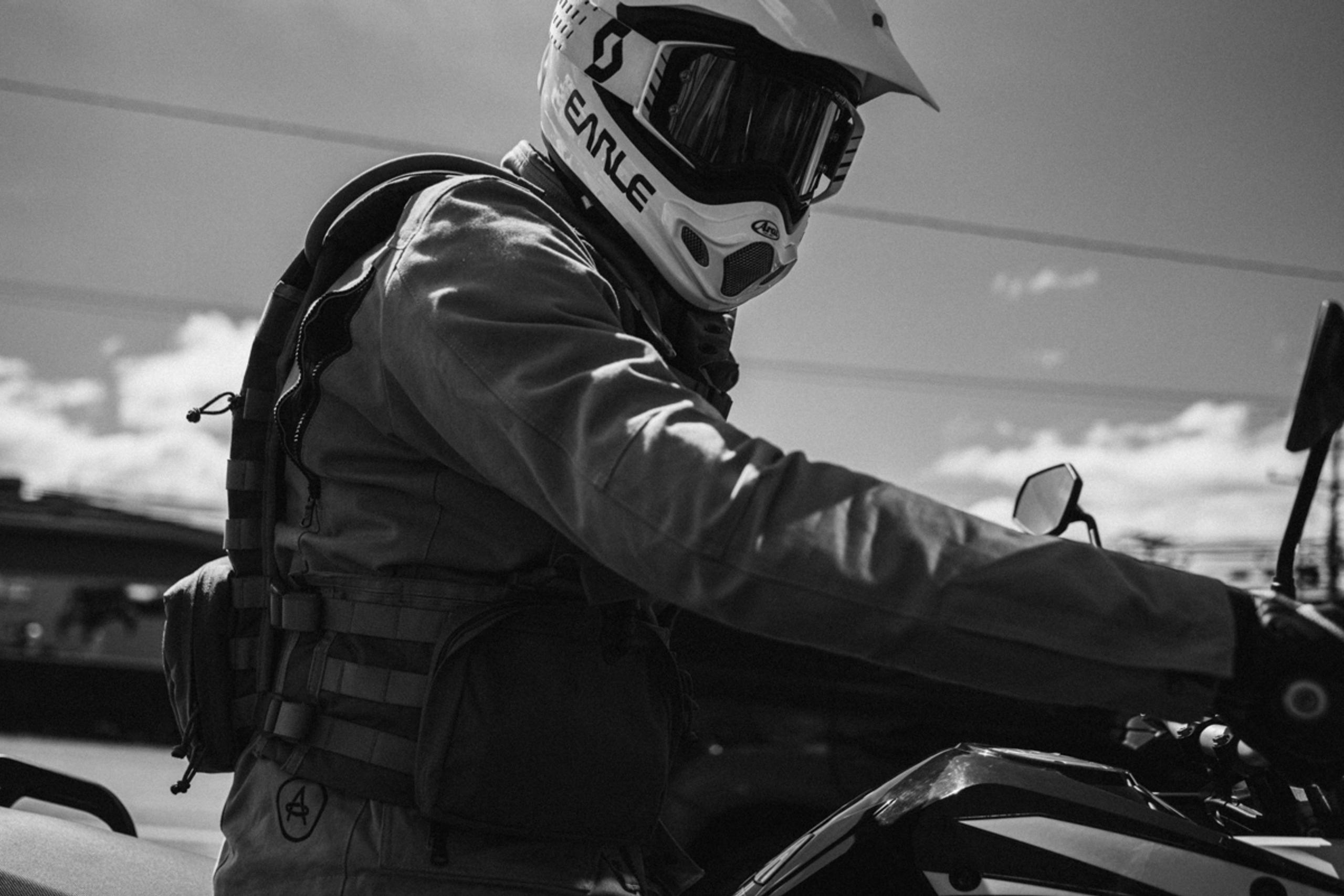
Storage For Easy Accessibility
When it comes to items that you’ll frequently be taking out or need readily available at any given time — such as your wallet and license, registration, insurance card, or sun glasses — you’ll almost certainly want to store these items in a handlebar bag or tank bag where they can easily be accessed when needed.
Pro Tip: You never want to store heat-sensitive items — such as fuel canisters, batteries, etc — near the exhaust.
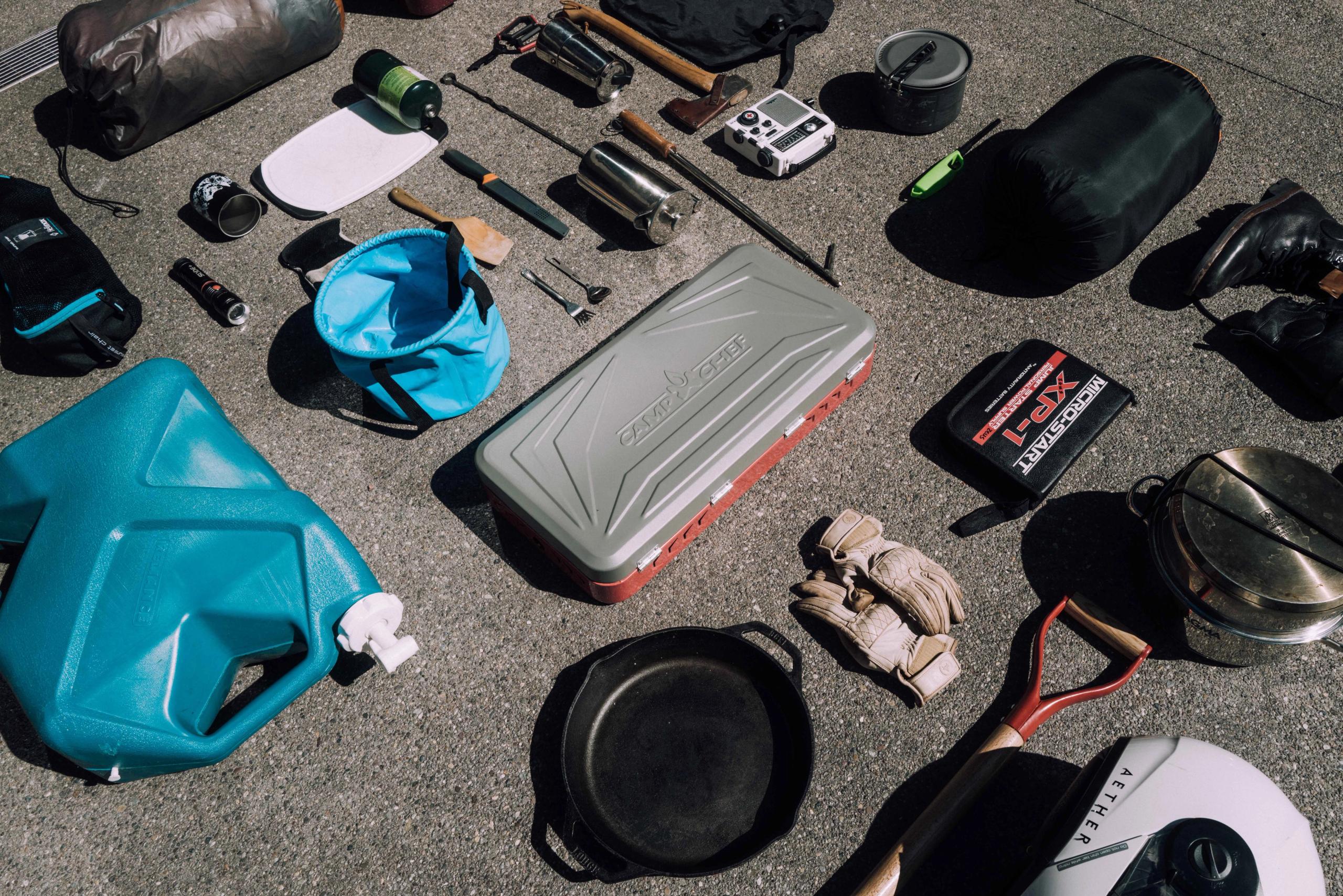
Complete Packing Checklist
Luggage, Storage, & Organization
-Duffle Bag, Dry-Bag, or Backpack
-Tank Bag or Handlebar Bag
-Soft Panniers or Hard Cases
-Packing Cubes
-Tie-Down Straps
Pro Tip: When traveling long distances on a motorcycle, a full-face or modular helmet will almost always be your best option.
Moto Gear
-Motorcycle Jacket
-Motorcycle Pants
-Motorcycle Boots
-Motorcycle Gloves
-Helmet
-Rain Slicker & Pants (or Rain Suit)
-Boot Covers
-Neck Tube or Balaclava
Pro Tip: Heated gear is fantastic for braving frigid weather while riding, though it should NEVER be your only line of defense against the cold due to the fact that it could fail or malfunction, thereby potentially leaving you in a very hazardous — if not outright life-threatening — situation.
Regular Clothing
-3x Shirts
-2x Pairs of Pants
-3x Pairs of Underwear
-2x Sets of Long Underwear
-3x Pairs of Socks
-1x Pair of Pajamas/Shorts/Sleeping Pants
-1x Pair of Flip-flops or Slippers
-1x Packable Insulated Mid-Layer Jacket
-1x Hat &/or Beanie
Tech & Electronics
-Comm System
-Power Bank
-GPS Unit
-Phone Mount
-Hardwired USB Charging Port
-Flashlight or Headlamp
Camping Gear
-Tent or Bivouac
-Sleeping Bag
-Sleeping Pad
Hygiene
-Dopp Kit
-Toothbrush & Toothpaste
-Travel Soap & Shampoo
-Hand Sanitizer
-Deodorant
Food Prep
-Food Storage Vessel
-Mess Kit
-Camp Stove
Tools, Maintenance, & Repair Kit
-Tool Kit or Multi-Tool
-Tire Pressure Gauge
-Tire Patch or Plug Kit
-Extra Spark Plugs & Fuses
Miscellaneous
-Bike Lock
-First Aid Kit
-Pocket Knife
-Notebook & Pen/Pencil
-Water Bottle or CamelBak
-Backup Paper Map
